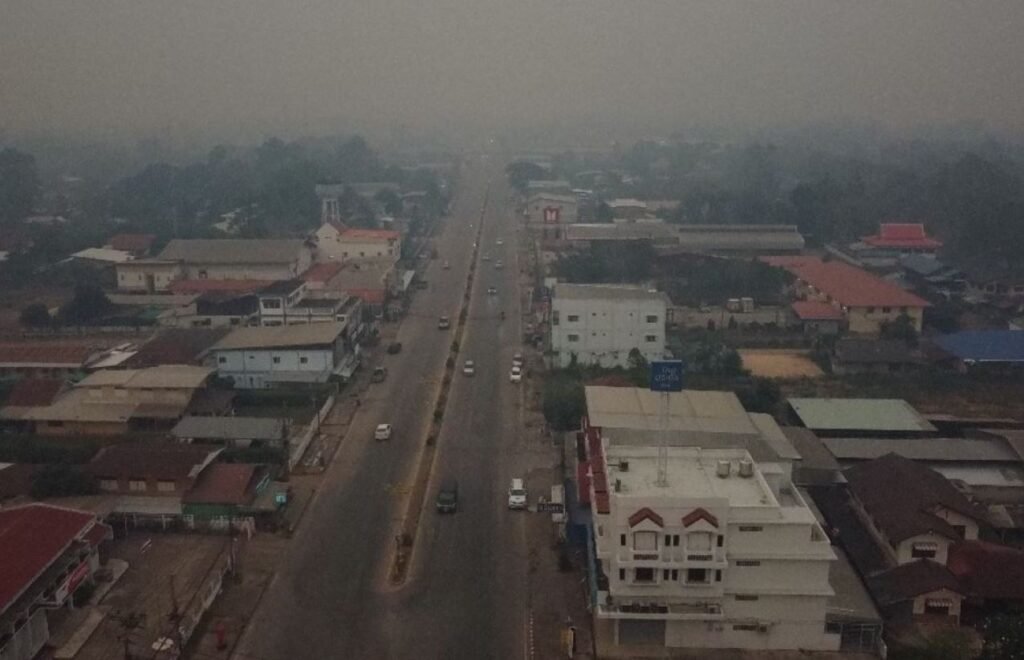s the Northeast city on the banks of the Mekong suffocates under thick haze that landed on Tuesday, Nakhon Phanom is toughening up on residents who burn trash and greenery outdoors.
According to the city’s Office of Natural Resource and Environment, PM2.5 concentrations on Wednesday increased to 167 micrograms per cubic metre (mcg) in four districts that border Laos: Muang, Bang Phaeng, Tha Uthen, and That Phanom.

Any level beyond 50 mcg is dangerous, and chronic ailments including lung and heart difficulties have been related to long-term exposure.
There are hundreds of hotspots in rural regions that satellites have spotted, and it is believed that farmers and homeowners in Laos and upper Thailand are burning garbage to feed the haze catastrophe.

Border dwellers are on the front lines of Thailand’s haze crisis, saying “Laos is disappearing.”
Haze levels in Bangkok, Chiang Mai and around the country have increased in the previous few days, drawing warnings from authorities.

Residents in Nakhon Phanom awoke on Wednesday to a white layer of haze covering the province, particularly around the Mekong River on the province’s eastern border. Residents of the four areas claimed that they could hardly make out the Laotian countryside across the river.
Border dwellers are on the front lines of Thailand’s haze crisis, saying “Laos is disappearing.”
The office also reported an air quality index (AQI) in the province of 277 on Wednesday, which is variably defined as “starting to affect health” or “extremely bad”. The AQI increased from 142 on Tuesday.
Locals were instructed by officials to stay indoors and use face masks outside.
Border dwellers are on the front lines of Thailand’s haze crisis, saying “Laos is disappearing.” The office issued a warning that violators of the Public Health Act may receive up to seven years in prison, a 140,000 baht fine, or both if they were found to be burning trash or plants outside




